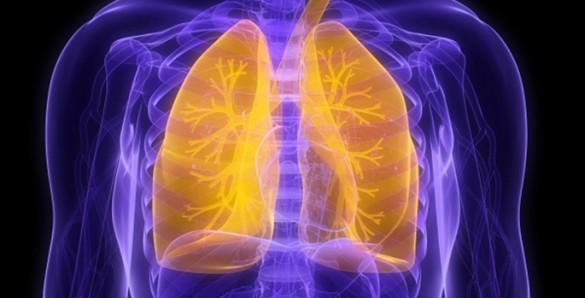by Nancy Humphrey
Vanderbilt University Medical Center, the Translational Genomics Research Institute (TGen), an affiliate of City of Hope and the Norton Thoracic Institute at St. Joseph’s Hospital and Medical Center in Arizona, have received a $3.5 million federal grant to study the cause of idiopathic pulmonary fibrosis (IPF) the nation’s most common and severe form of fibrotic lung disease.
In addition, VUMC and TGen have received a $2.6 million federal grant from the Department of Defense (DOD) to study a variety of other genomic factors associated with non-IPF forms of pulmonary fibrosis (PF).
IPF is a progressive and irreversible disease characterized by shortness of breath and a dry cough. IPF and PF both scar and stiffen the interstitium — the delicate lace-like network that supports the lungs’ tiny air sacs. Microscopic blood vessels weave through the interstitium, creating a blood-air interface that allows oxygen to be pulled into the blood with each inhale, and carbon dioxide to be expelled into the air with each exhale.
IPF is a type of lung disease affecting 50,000-100,000 people a year, normally occurring in adults 50 to 70 years old, in more men than women, and particularly in those with a history of cigarette smoking.
Over time, the scarring with IPF gets worse and it becomes hard to take a deep breath because the lungs cannot take in enough oxygen. As the lung tissue thickens, the lungs can’t properly move oxygen into the bloodstream and the brain and other organs don’t get the oxygen they need. Most patients with IPF die from respiratory failure within five years.
There currently is no known cause, no cure and no treatment to improve patient lives short of a lung transplant, a radical surgery that usually requires months of waiting for available organs, and often requires a long and sometimes agonizing recovery. And not everyone is a suitable candidate for transplantation. Current IPF drug treatments only slow the progression of the disease.
“The prognosis of IPF is worse than many cancers,” said Jonathan Kropski, MD, assistant professor of Medicine at Vanderbilt and one of two principal investigators of the study. “Patients with IPF often become progressively more disabled by their lung disease, and today less than half of IPF patients survive five years after their diagnosis,” he said.
“With the latest in technology, this work will generate the most comprehensive molecular characterization of healthy and IPF lungs to date, and promises to answer fundamental questions about cell types, genetic variants and gene expression changes driving the disease,” said Nicholas Banovich, PhD, an assistant professor in TGen’s Integrated Cancer Genomics Division.
With new single-cell sequencing technology adopted by the study team, Kropski, Banovich and collaborators are now able to closely examine the gene expression profiles of individual cells within the lungs to identify their function, and ultimately understand the gene changes that may be driving the disease.
Prior to the advent of single-cell sequencing devices, researchers could not begin to decipher the molecular source of IPF, Banovich said. By closely examining individual cells, rather than a mash-up of many cells from a tissue sample, researchers anticipate being able to identify specific gene expression changes that could lead to IPF. This could result in earlier diagnosis and perhaps better treatments for the disease.
“By improving our understanding of the critical molecular drivers of IPF, we are very hopeful that these studies will set us on a path to more precise and more effective treatments that improve the lives for the hundreds of thousands of patients with this disease,” Kropski said.
“This is exciting because prior studies of using lung tissue from IPF patients could not tell us what the individual cells are doing to cause this disease. This study is trying to precisely understand how all of the different types of cells in the lung behave differently compared to normal lungs. We are leveraging the respective strengths of our groups and our institutions to accelerate our progress in understanding this devastating disease.”
The study is funded by a five-year grant from the National Heart, Lung and Blood Institute of the National Institutes of Health (RIHL145372).














